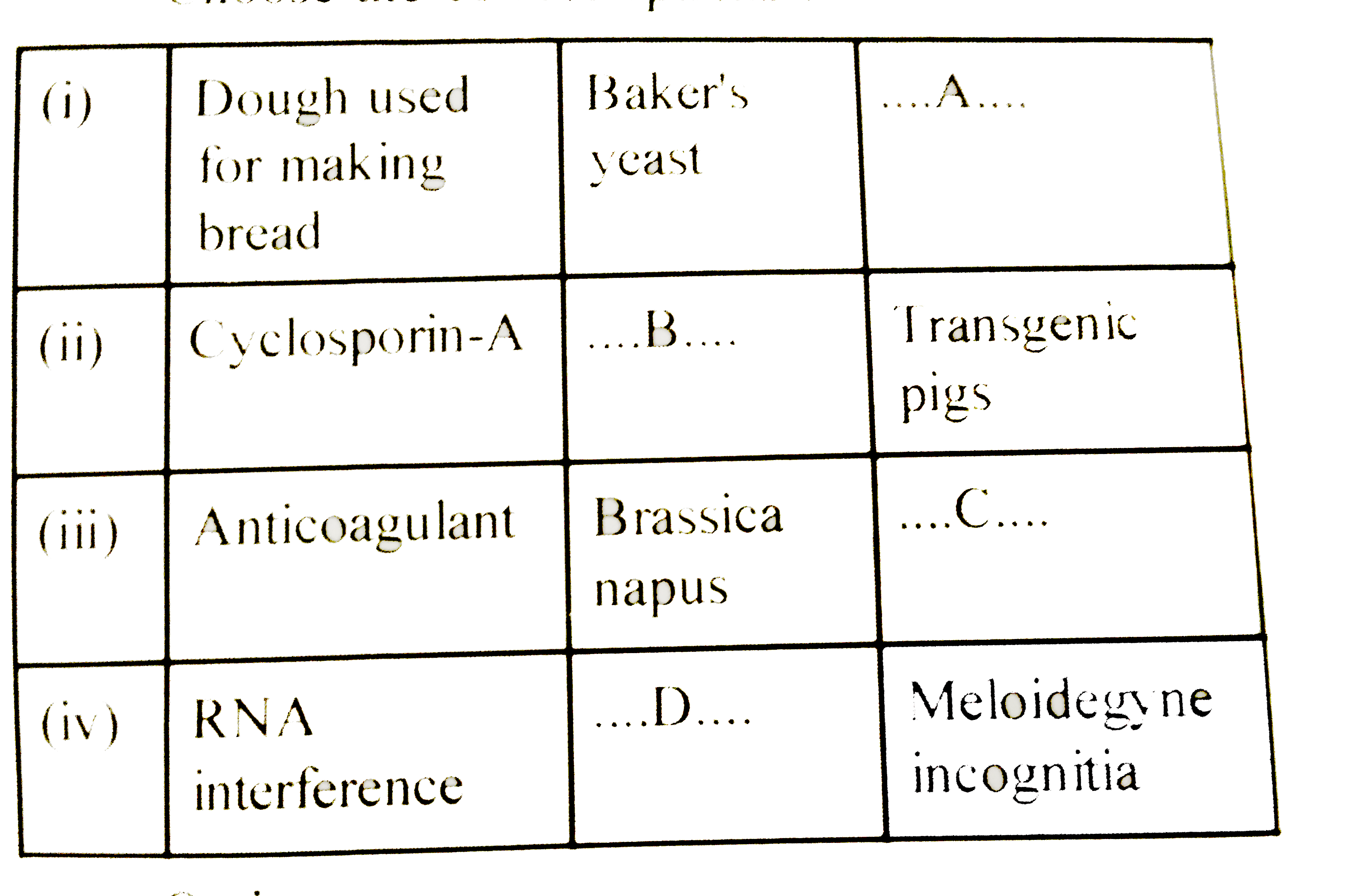Complete the analogy
Amoeba: Simple binary fission::paramecium: Choose the correct option.
Longitudinal binary fission
Simple binary fission
Oblique binary fission
Transverse binary fission
The correct Answer is:D
To complete the analogy "Amoeba: Simple binary fission:: Paramecium: ?", we need to identify the type of binary fission that Paramecium undergoes, similar to how Amoeba undergoes simple binary fission.
1. Understand the Concept of Binary Fission: Binary fission is a method of asexual reproduction where a single organism divides into two parts, each developing into a new organism.
2. Identify the Type of Binary Fission in Amoeba: Amoeba reproduces through a process called simple binary fission. In this process, the organism divides into two equal halves.
3. Explore the Types of Binary Fission: There are four types of binary fission:
- Irregular Binary Fission: Division can occur through any plane (example: Amoeba).
- Longitudinal Binary Fission: Division occurs along the longitudinal axis (example: Euglena).
- Transverse Binary Fission: Division occurs along the transverse axis (example: Paramecium).
- Oblique Binary Fission: Division occurs at an oblique angle (example: Serratia).
4. Determine the Type of Binary Fission in Paramecium: Paramecium undergoes transverse binary fission, where the organism divides along its transverse axis.
5. Complete the Analogy: Since Amoeba is to simple binary fission as Paramecium is to transverse binary fission, the correct completion of the analogy is:
- Amoeba: Simple binary fission:: Paramecium: Transverse binary fission.
6. Select the Correct Option: Among the options provided, the one that corresponds to the type of binary fission in Paramecium is "transverse binary fission".
Final Answer:
The correct option is transverse binary fission.
- Irregular Binary Fission: Division can occur through any plane (example: Amoeba).
- Longitudinal Binary Fission: Division occurs along the longitudinal axis (example: Euglena).
- Transverse Binary Fission: Division occurs along the transverse axis (example: Paramecium).
- Oblique Binary Fission: Division occurs at an oblique angle (example: Serratia).
- Amoeba: Simple binary fission:: Paramecium: Transverse binary fission.
The correct option is transverse binary fission.
Topper's Solved these Questions
Similar Questions
Knowledge Check
Choose the correct options.
ACell division helps group of cells to undergo certain modification to form specialised organs.BCell differentiation helps in increasing the number of cells.CIn viviparous animals, development of zygote takes place inside the body.DAll of the above.Choose the correct options .
AAtomic mass unit (u) is 1/12 of the mass of a neutral carbon atom .6C12 in its lowest enegry state 1aμ=931MeVBZ: Atomic number (number of protons)
N: Number of neutrons
A: mass number (A=Z+N)CIsotopes: nuclei having same number of protons but differenct number of neutrons
Isobars: nuclei with same number of A
Isotones: nuclei with same number of neutrons but different are correctDAll options are correctChoose the correct options:
AFavourable conditions for formation of graphite are high pressure and low temperature from equilibrium diamond (d=3.5g/ml)⇔ graphite (d=2.3g/ml),Δ=−1.9kJ/moleBFor reaction N2O4(g)⇔2NO,(g), degree of dissociation (α) is √K4P+KP where P is equilibrium pressure.CFor reaction CI2(g)+3F2(g)⇔2CIF3(g),ΔH=−329kJ ,dissociation of CIF3(g) will be favoured by additon of inert gas at constant pressure.DReaction stops at equilibrium (microscopically).

